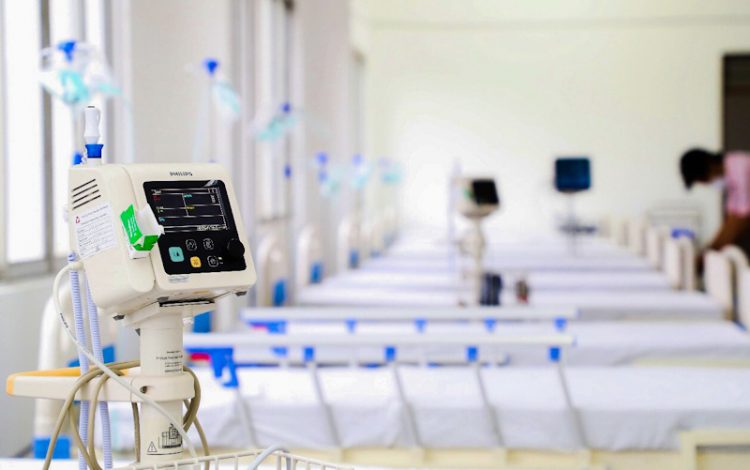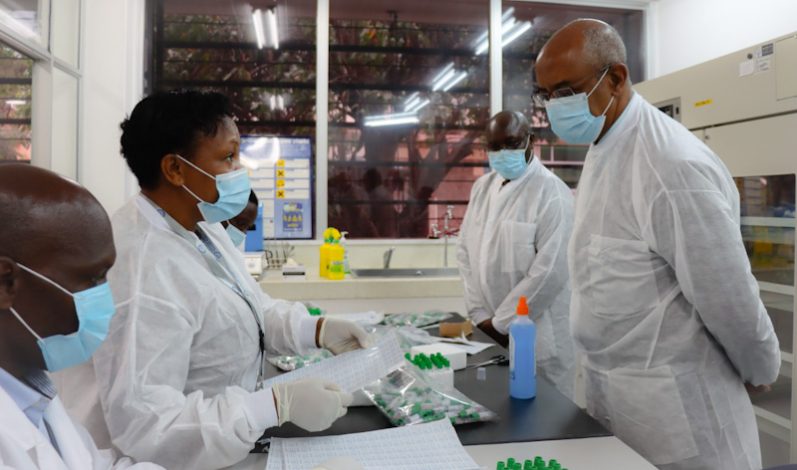“This third Covid-19 wave has a different pattern compared to all previous waves – not going down completely, lingering active caseloads and bumpy offshoots driven by an intensified spread in Lake Victoria region posing a huge threat for a wider rebound across the country,” Dr Ahmed Yakub Kaleb, Independent Consultant Pathologist Tweeted June 14, 2021.
Kenya had just emerged from a moderate second wave of Covid-19 infections to a more devastating third wave. The country had announced a third wave of the COVID-19 outbreak in early March 2020.
Then, the Africa Centres for Disease Control (CDC) had reported a 13 per cent average increase in deaths for Kenya.
“We are about to start another difficult period, but we can also overcome this period. It has taken a toll on us over the past year, and it is at this time that we can’t let our guard down,” Mutahi Kagwe, Kenya’s Cabinet Secretary for Health told the media.
The explosive outbreak of the virus overwhelmed the nation’s deficient health care infrastructure, leading to a shortage of everything from hospital beds to oxygen supplies.
The situation forced President Uhuru Kenyatta to announce restrictions on movement into and out of the capital Nairobi and four other counties. This was on March 26.

***
“With 2 per cent of its entire population vaccinated an estimated 20 to <50 per cent having natural immunity from past COVID-19 exposure, Kenya still has a large proportion of its unvaccinated population that’s vulnerable to contracting severe COVID-19 until vaccination is scaled-up,” Dr Ahmed noted.
From 2020, while attempts were made to control the spread of infections and healthcare infrastructure built to treat the ill, the health sector seems to be overstretched.
“The COVID-19 Pandemic has triggered one of the worst health and economic crisis of our time. The Pandemic overstretched our health systems, and in line with the advisory of the World Health Organization, the Government implemented appropriate interventions to save lives,” Ukur Yatani, Cabinet Secretary Treasury had said while tabling the fiscal year 2021/22 Budget Statement before parliament.
Yattani had said the focus was on repairing and preparing the health infrastructure as well as the economy for future challenges.
“The response has undoubtedly strengthened our health care system through the provision of necessary medical supplies, installation of modern equipment, and deployment of more health personnel,” he had added.
However, this is contrary to the budget implementation review report by the Controller of Budget that showed that county governments spent Covid-19 funds on non-essentials.
According to the report, out of the KSh4.77 billion spent on Covid-19 mitigation measures in nine months of 2020-21, a lot was on payment of water and electricity bills, travel, fuel, lubricants, allowances, advertising and hospitality.
Kenya is considering offering as much as Ksh 8.7 billion for the Kenya COVID-19 Emergency Response Project, an additional Ksh 14.3 billion for purchase of COVID-19 vaccines and related expenditures in the course of FY 2021/22 in addition to the Ksh 7.6 billion appropriated in the current Budget to boost health care infrastructure in the nation hit by the coronavirus pandemic.
Treasury noted that the outbreak and rapid spread of the COVID-19 Pandemic necessitated an urgent need to
upscale implementation of Universal Health Coverage to all the 47 counties.
Kenya Unveils Policy Documents to Support Primary Healthcare
Missed targets
According to the World Health Organization (WHO) – Regional Office for Africa, Kenya had set out to build capacity to handle COVID-19 disease by having a minimum of 300 ICU beds in each of the 47 Counties.
“This aspiration has largely not been achieved and remains one of the biggest gaps in COVID-19 response. Increasing the nationwide ICU capacity is urgent especially as the third wave seems to be causing higher need for hospitalization.
This has not been made easier by challenges with shortages of piped oxygen. The oxygen challenge is two-fold; one is out of investment interests in the supply chain and the other is gaps in hospital infrastructure such as dysfunctional hospital oxygen systems that may hamper the delivery of oxygen to the patients, even if it is made available.”
****
Poor coverage of the second dose
Currently, the Kenya Medical Practitioners, Pharmacists and Dentists Union (KMPDU) has faulted the Ministry of Health’s communication breakdown regarding the second dose of the Covid-19 vaccine. The union said, “There’s an extreme shortage.”
“We are getting messages to go get the vaccine done at various facilities, however when we get there, the jab is not available” talks in every facility.”
In response to the union’s concerns, the ministry affirmed the shortage.
“The Ministry of Health wishes to reassure doctors, other health workers and Kenyans who are eligible for the 2nd dose of the Covishield vaccine that they will get their due doses as soon as they become available,” it responded.
“A low uptake of the vaccine among health care workers who are a priority group in the first phase of the rollout is perhaps due to this,” WHO Africa had cited on the gaps identified in implementing Kenya’s Risk Communication and Community Engagement (RCCE) strategy and plan.
The overall goal of this strategy is to effectively coordinate Kenyan national and county communications and community engagement activities to prevent the spread of the disease, build trust in the leaders and health workers to provide accurate information and essential services and encourage communities’ active participation in supporting the risk reduction and response measures.
As the government prepares effective plans for expediting the second dose coverage among priority groups, it must address emerging concerns from the sector.
Key among them, increasing the capacity of the health workers, fulfilling their contracts among others.
“The National and County governments should quickly scale up the health system capacity to respond and save lives – that’s what really matters right now,” Dr Githinji Gitahi, Global CEO Amref Health Africa says.





5 Comments
Pingback: Equity Foundation, Kenya COVID-19 Board Donates Ksh 33 Mn PPEs
Pingback: Covid-19 Impact: Reopening Coronavirus Stressed Kenyan Economy
Pingback: Kenya Receives Fresh Batch of AstraZeneca Vaccines from Denmark
Pingback: Covid -19: is Kenya stuck in a perennial loop? - Kenya Monitor
Pingback: Kenya Aims to Vaccinate 26 Million Citizens by 2022